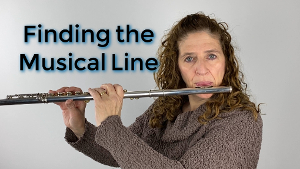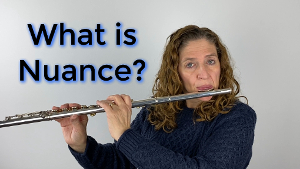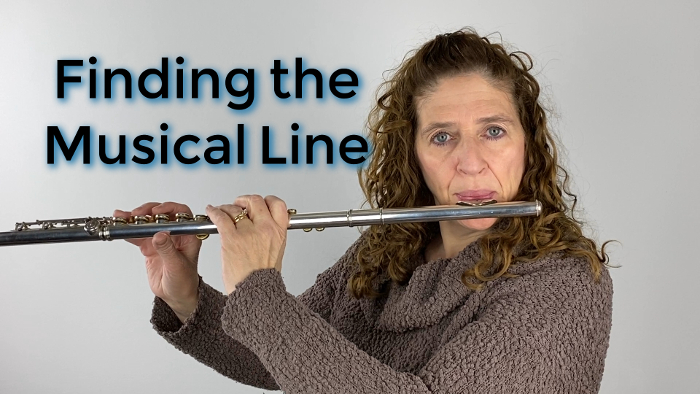When you practice do you just play the notes on the page, or do you make music with those notes? It is okay to just play the notes on the page. But it is much more rewarding to make music with those notes. Finding the musical line in your music is a wonderful exercise to help you enjoy music more.
When I was in school, I distinctly remember playing a lesson for my teacher Georgetta Maiolo. I came into that lesson with the Hindemith Sonata. I only played the opening phrase before she stopped me cold to tell me her story. She had been a child prodigy that premiered with the Pittsburgh Symphony Orchestra when she was 15 years old. She happened to be taking lessons from the principal who was also a professor at a college and that’s where the lessons were held. Now there was a method of teaching back then that would not fly today, but this is what happened. She went to her lesson and played the opening to Hindemith as I had done for her. However, her teacher threw a chair across the room and told her to get out and not come back until she could play that musically!
Georgetta had no idea what she did wrong. So, she left and went to a practice room until some kind soul came in told her what to do. This older student told her it was musicality that this teacher was listening for, and that meant the musical line.
I am very thankful that my teacher did not do that with me! But she did teach me that I was not playing the musical line. Even though I was playing all the notes on the page, I was not playing the musical line. Her story opened my eyes to see beyond what is on the page.
Finding the musical line is like reading a story in a schoolbook and then finding out from your English teacher that there are all these hidden meanings in that book. It is not just the story or the words on the page. When you are looking at your solo, you want to find that musical line because it’s going to make the music more meaningful to you. It’s going to add so much more interest for you, the player, but also for the person who is listening to your performance.
There are different ways of finding the musical line in your etudes and solos. Looking for regular phrase lengths or discovering that there are no regular phrase lengths such as in Baroque versus 20th-21st century music, can help you get started. If you are having difficulty knowing where your phrase is going you should listen and follow along with your music. Mark where your ear tells you the musical line is moving to. If you can find where the phrase comes to a cadence, mark those spots. With these markings you can then practice following along with your markings.
Consider the opening of Mozart Concerto in G. Now in the opening, it is easy to know where the phrase is going, because there are 3 beats, rest at the end of it. That is the beginning of my phrase map. Then I want to look and ask what are the predominant notes? Here the predominant notes are one and five or G and D and then we end on a B, so G B D and the chord.
Now, every solo that you have, especially if they’re in 20th, 21st century, are not going to stay in that key, or outline the chord so nicely. So, then you need to use visual or oral cues to figure the phrase out.
It is your job to figure out what you want to bring out, and where you want to aim for in your phrases. It is perfectly fine for you to have a different idea of a phrase than I do. Maybe you hear something slightly differently. That’s why musicianship is a fantastic thing and why three different performances will give you three different ideas of what’s important in that phrase. You can decide what idea you like and go for it.
So, that is why you need to find the musical line. To play musically, you must play with that musical line in mind, so that you are not just playing the notes on the page. You are making music.
Have fun!
DoctorFlute
Watch me demonstrate this:
Finding the Musical Line – FluteTips 145


